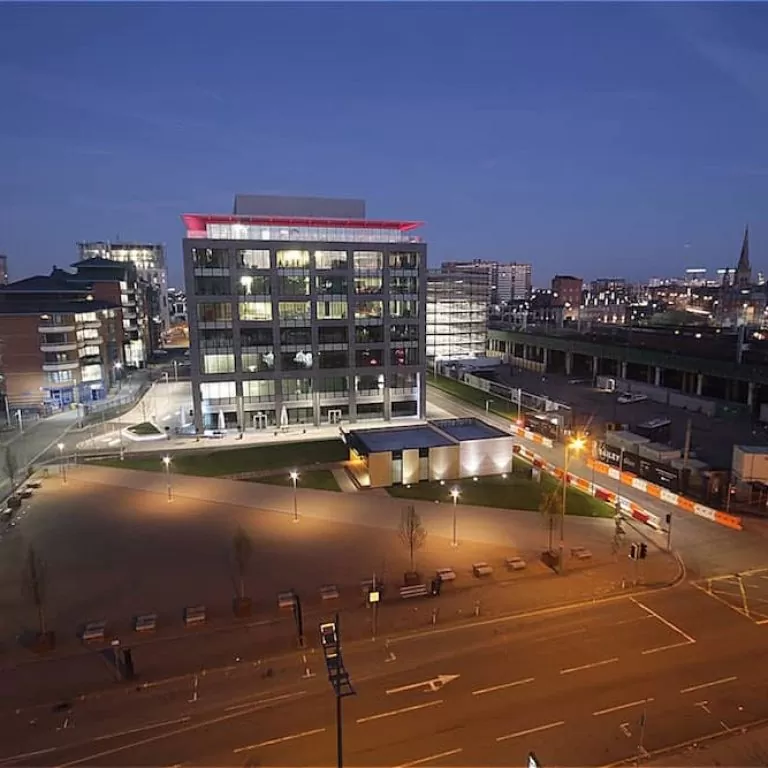
News Night-time time-lapse
Above: ‘blue hour’ at the New Bailey site, Manchester.
Some projects require continuous capture for extended periods of time throughout the year. This means that time-lapse camera systems are often in operation during night-time hours, or hours where natural light is considerably reduced.
Professional time-lapse photography providers equip their camera systems with the necessary tools to enable continuous capture regardless of these changes to the immediate environment.
Robust housings keep the internal hardware of the camera protected and functioning despite weather complications, while wireless networks allow settings to be closely monitored and adjusted from a remote location when necessary.
Artificial light versus natural light
When all of this is taken care of, the results of capture can be incredibly rewarding to see. Plus, late evening/ night-time images have a very special quality that can transform any cityscape, rendering details in truly unique and visually impressive ways.
During the winter months especially, there are fewer daylight hours, which means capture is at the mercy of artificial lighting from street lights, vehicle headlights, and those lighting up billboards, offices, and tower blocks.
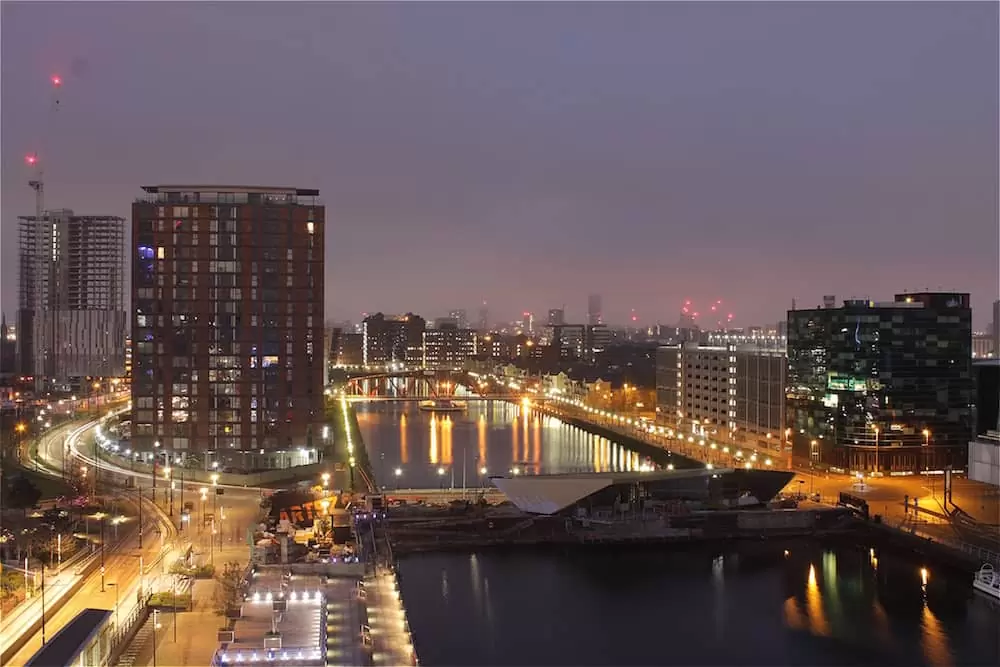
Above: peaceful waterfront, Salford Quays.
But this can create spectacular compositions, like the one above. Although there is less activity at these later hours, the city is alive with colour and light. Reflections caught on the the water also add to the intensity and tranquility of the scene.
As well as creating peaceful scenes, artificial lighting can be representative of the hustle and bustle of city life. Bright objects, such as car headlight/ taillights, leave visible trails when images are captured using longer exposures and, as such, this technique is often used to capture a night-time/ low-level light setting.
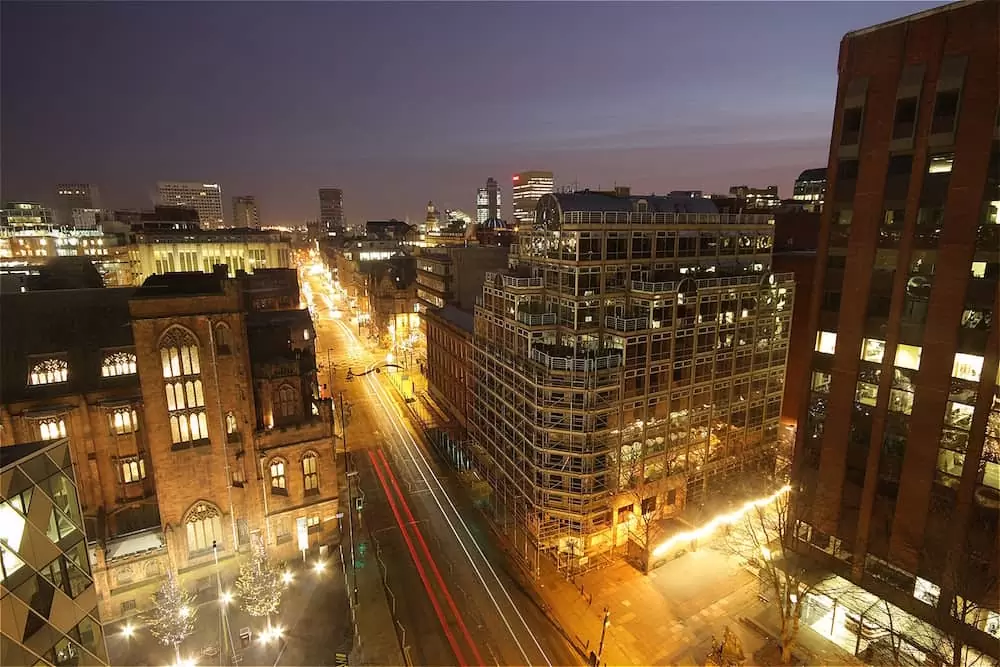
Above: Manchester alive with light.
When natural light is considerably reduced, however, longer exposures are necessary in order to retain the full dynamic range of the image. A slower shutter speed guarantees that more light is absorbed at the moment of capture and with a fixed, stationary camera in place, a vibrant and clear image is captured, as above.
Professional time-lapse providers are well-equipped for capturing the best quality images possible at regular intervals, and are able to continuously micro manage camera settings relative to the specific lighting conditions on site.
Predictable patterns
Predictable light and colour patterns familiar to certain periods of the year can be a gift when capturing using interval photography, bringing out the beauty of the ordinary and the everyday.
‘Golden hour’ and ‘blue hour’, for example, are known for their favourable quality of light; when captured on camera, these moments can be truly magical.
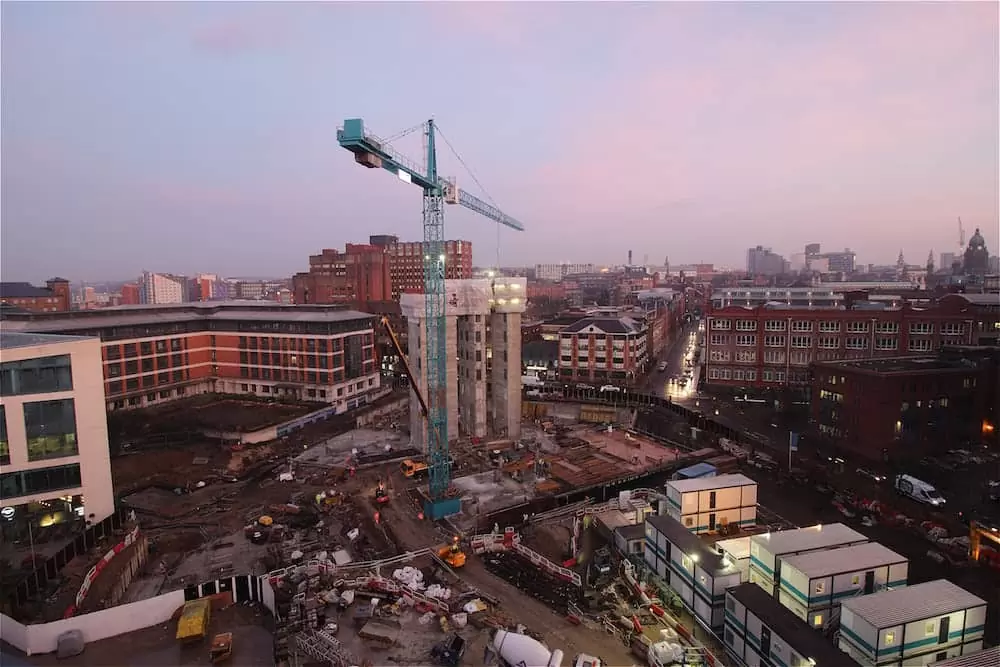
Above: early morning light over construction at Wellington Place, Leeds.
‘Golden hour’ recurs twice each day and refers to the period shortly after sunrise and the period shortly before sunset. ‘Blue hour’, on the other hand, refers to the period of twilight before sun rise and the dusk after it sets resulting in the indirect sunlight taking on a predominantly blue hue.
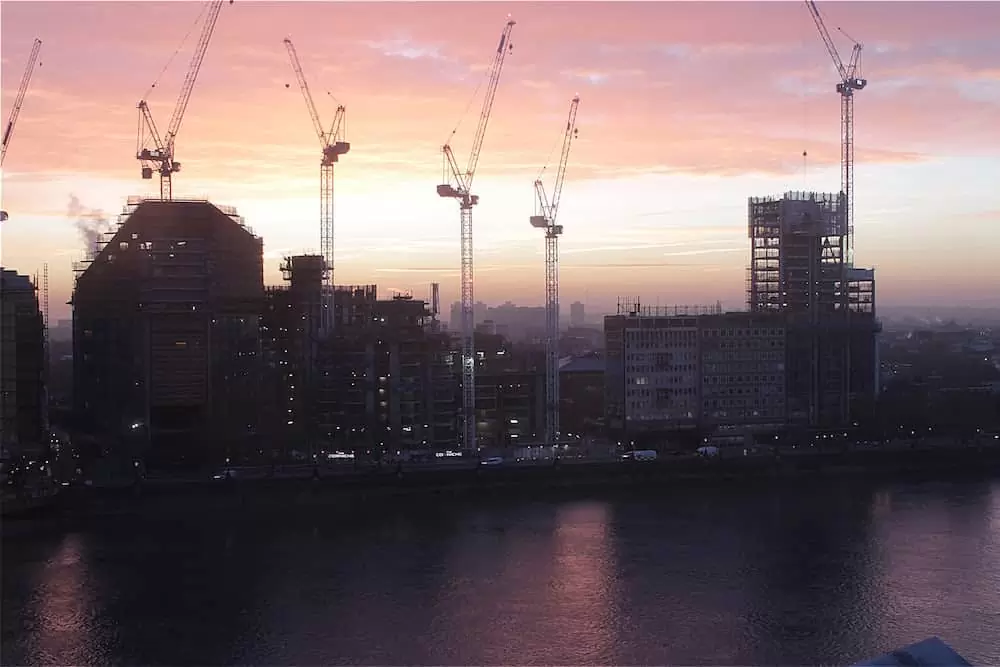
Above: golden hour along the River Thames, London.
The sun is closest to the horizon during these times resulting in more blue light and warmer tones, with the sky often taking on particular hues with differing intensity.
When the city sleeps
Even when the city is at rest and there is no activity underway on site, interval time-lapse photography means that capture continues with no practical intervention needed.
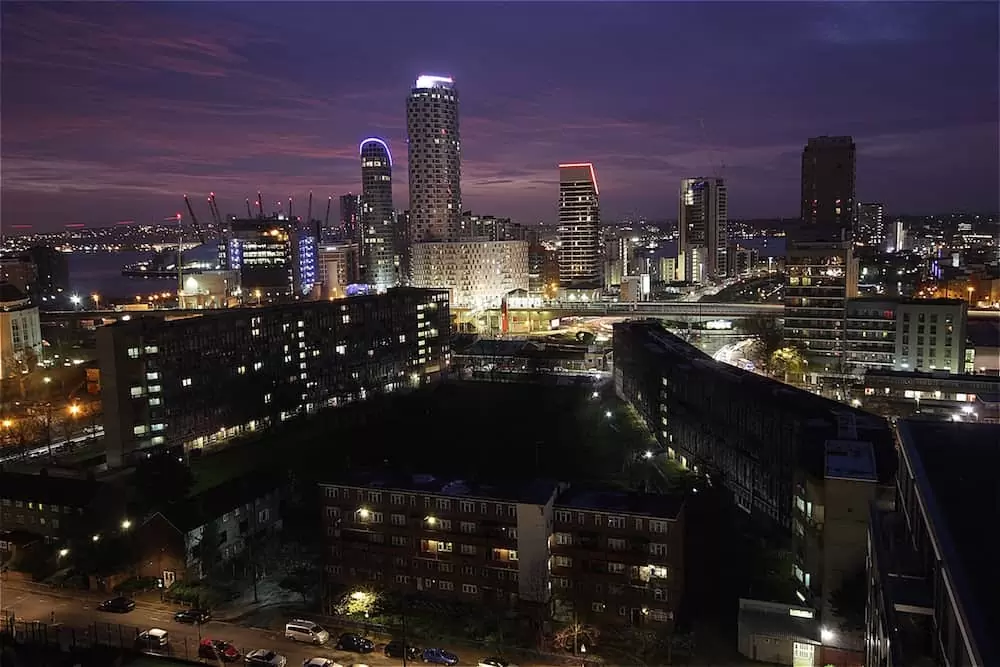
Above: early morning sky over Tower Hamlets, London.
Considering that time-lapse sequences rely on a dynamic visual narrative to tell a story of change over time, images like the one above can be just as important as those which capture construction during peak times of the day. The inclusion of these kinds of shots, with their rich colour palettes, can add so much variety to a sequence.
But it is easy to overlook the beauty of the individual image, as time-lapse is most effective when images are viewed collectively ‘in sequence’. Still, high quality shots can be just as effectively applied in promotional, marketing initiatives as a video sequence and have no limit to their shelf-life.
As the examples in this blog demonstrate, the true beauty of time-lapse is to be found in the details of the individual image.